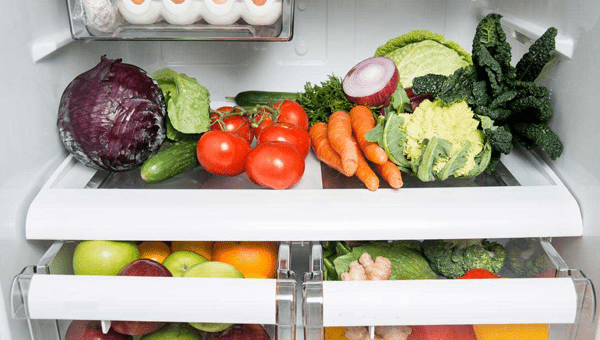This is often a tricky one, keeping your kitchen fridge clutter-free. Why? It’s probably one of the most used areas in your home. Plus, keeping everything well organised is hard when there is no system in place and new things are being brought in regularly!
This goes for all organisation and decluttering – it’s vital that you start with a blank (and clean) canvas, so pull everything out, give the space a big wipe down, and only then can you start to declutter and implement a proper organisation system.
After the fridge has been emptied and cleaned out, sort through the food. Anything that has expired/past its use by date can be disposed of accordingly (remember to recycle)! If anything needs to be eaten within the next few days, make a note to incorporate the foods in your upcoming breakfast/lunch/dinners.
Organising a fridge properly is vital to prevent cross-contamination and ensuring that your foods are receiving the right about of coolness (the fridge is cooler at the top FYI). We like to keep up there our butter/margarine, dairy products like cheeses, cream and yoghurt, as well as any cold meats (think ham, salami etc.)
Your second shelf can continue along with the ready-to-eat foods, with other cooked cold meats, cakes, leftovers and packaged foods.
Next shelf down is your raw meat, poultry and/or fish. It’s important to keep these in airtight, sealed containers to prevent cross-contamination, as well as reducing the smell!
The last shelf or draw in your fridge can be used for vegetables, fruits and salad mixes. The drawers help keep all your produce crisp and fresh.
Your fridge door is the warmest place in the fridge, so condiments and jarred goods are the perfect candidates to sit here!
When possible, we love to use storage containers to help store and preserve our food. These containers can be easily picked up at the likes of Ikea, Kmart or Howards. Storing food (with labels and dates marked) helps streamline your fridge and make it easier to see what you have actually got in there and when it needs to be eaten. None of that finding mouldy expired foods that should have been eaten yesteryear.
Remember to check that your fridge is at the correct temperature too, which should be around 3 degrees. This keeps your fridge chilled enough, whilst not freezing your food and making it inedible.
Now you’ve got the checklist on how to organise your fridge, you can stop piling things on top of each other, and slotting things into places they shouldn’t go! Give your fridge the makeover it deserves and see how much easier it is to find things in your fridge (and reduce waste!).

